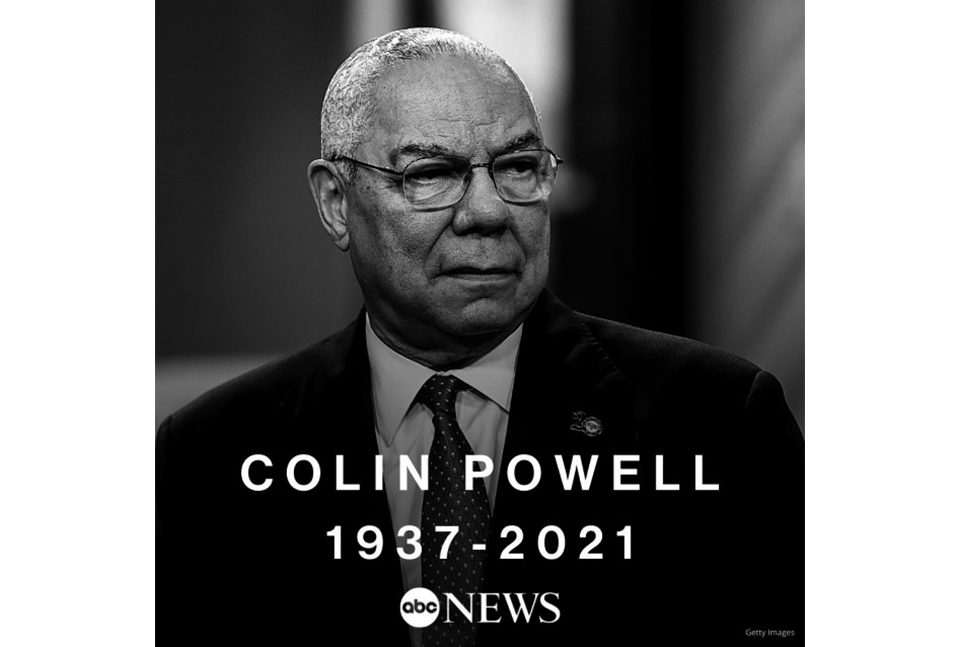- 如有疑问,请联系电邮
- customer@ihealth66.com
USNEWS:麻醉前要问的问题

中国甲状腺癌诊疗规范(2018年版)(8)
2019年2月11日
USNEWS:积极心理学如何提高学生的成功
2019年3月3日By Elaine K. Howley
外科手术对于每个患者都可能是一个可怕的提议。首先,恐惧与促使手术的问题本身有关。那么,您也可能对疾病治疗方式有一些顾虑。这种恐惧的一部分经常围绕着你对麻醉的反应——强大的止痛药。
麻醉可分为三大类:
局部。这种类型的麻醉剂会使身体的某个特定区域麻木,比如当牙医给你的牙齿填满一个洞时你会得到什么。这会让病人完全清醒,并知道发生了什么事,或者只是轻微的镇静。
区域。这些麻醉剂可以阻止身体某个部位的疼痛,如胳膊或腿。硬膜外注射止痛药,直接注射到脊柱,从腰部向下止疼,通常用于缓解分娩疼痛,而不会让母亲完全入睡。这样,她就可以参与到自己孩子的出生过程中,而不会感受到这种经历通常带来的痛苦。局部麻醉剂也可用于各种下肢骨科手术,如重建膝关节韧带,有时用于脑外科手术,患者需要清醒,以响应外科医生的提示,以帮助指导切口的位置。
全身麻醉。这是大多数人听到“麻醉”这个词时可能会想到的。这些药物会使你失去知觉,通常通过面罩作为气体输送。美国国家卫生研究院报告说,当使用这种麻醉剂时,“你不会感到任何疼痛,而且你不会记得之后的手术。”它通常用于更大或更复杂的手术,如器官移植、肺或心脏手术。
所用麻醉剂的类型将取决于手术的位置和手术的类型。
HAVING A MAJOR SURGICAL procedure can be a scary proposition. First, there’s the fear connected to the issue itself that prompted the surgery. Then, you may also have some concerns about how the procedure will go. Part of this fear often revolves around how you’ll react to anesthesia – powerful medications that block pain.
Dr. Karen Sibert, director of communications and associate clinical professor in the department of Anesthesiology & Perioperative Medicine at UCLA Health in Los Angeles, says that “anesthesia is what enables you to tolerate surgery. Modern surgery really couldn’t develop until anesthesia developed. Before the onset of anesthesia, surgical procedures were short and done as fast as possible for humanitarian reasons.” In the mid-1800s, a gas called ether was first used to anesthetize a patient during surgery. Since then, other drugs have been developed that also work to block pain and desensitize patients to nerve signaling in the body to enable procedures that otherwise would be far too painful to conduct.
Dr. Mary Dale Peterson, president-elect of the American Society of Anesthesiologists and executive vice president and chief operating officer of Driscoll Health System in Corpus Christi, Texas, says the word “anesthesia” comes from the Greek word meaning “without sensation. Anesthesia is either a loss of feeling or awareness,” such as you’d want to have if a surgeon were about to cut into your body to conduct a needed medical procedure.
Here are questions to ask if you’re about to have anesthesia:
- What type of anesthesia will be used?
- What are the risks of anesthesia?
- How can I best prepare for this procedure?
- What should I expect after the procedure?
1. What Type of Anesthesia Will Be Used?
Anesthesia can be divided into three major types:
- Local. This type of anesthetic numbs a specific area of the body, such as what you’d receive when having a cavity filled by a dentist. Peterson says it leaves the patient wide awake and aware of what’s going on, or only mildly sedated.
- Regional. These anesthetics block pain in an area of the body, such as an arm or leg. Epidurals – injections of pain-blocking medication directly into the spinal column that block pain from the waist down – are commonly used to alleviate labor pains without putting the mother completely to sleep. That way, she can participate in the birth of her child without feeling the pain that typically comes with that experience. Regional anesthetics may also be used for a variety of orthopedic surgeries on the lower extremities, such as reconstructing ligaments in the knee and sometimes in brain surgery, where the patient needs to be awake to respond to cues from the surgeon to help guide where incisions should be made.
- General. General anesthesia is what most people probably think of when they hear the word “anesthesia.” These drugs make you unconscious and are usually delivered as a gas through a face mask. The National Institutes of Health reports that when given this type of anesthetic, “you do not feel any pain, and you do not remember the procedure afterwards.” It’s commonly used for larger or more complex procedures such as organ transplants or lung or heart surgery.
The type of anesthetic used will depend on the location of the surgery and the type of procedure.
2. What Are the Risks of Anesthesia?
Being sedated or made unconscious is not a risk-free enterprise, and anesthesiologists are highly-trained specialist physicians who know how to react in the dynamic environment of the operating room to keep you safe. “Every patient is a little bit different in how they react to or metabolize drugs,” Peterson says, a situation that can also be influenced by other medications the patient may be taking and disease states or other health issues. “All of these can change how those (anesthetic) drugs work on the body.”
With general anesthesia, “there’s a loss of consciousness and there’s a loss of ability for the patient to maintain their airway or breathe on their own,” which can be a challenge depending on the patient and the particular situation. “For a lot of major operations, a breathing tube will be fit in, and we’ll put the patient on a breathing machine to assist with that.” In addition, some anesthetic medications depress the heart or blood pressure, which means the anesthesiologist will have to counteract those effects with other medications to support the patient.
“In addition, you’ve got the insult of surgery and blood loss” that the anesthesiologist works to counteract with blood transfusions and other techniques and medications to stabilize the patent and allow the surgery to continue, Peterson says, adding that one reason why she loves the field is because “you’re bridging two different worlds. You’re bridging the surgical world and the internal medicine world. You’ve got to know about all those diseases and how they impact the patient, but you also have to know about the surgery, even though you’re not the person performing it.”
During a procedure, Sibert says the anesthesiologist is tasked with taking “care of the heart, the lungs, the brain, the circulation, the kidney function, you name it. We’re the internal medicine physician or pediatric physician for everything else that’s going on with that patient during the procedure.” Being able to do this all safely “requires a great deal of general medical knowledge in addition to what drugs to use to sedate or anesthetize someone and wake them up in the end. We’re also responsible for intraoperative fluid management, transfusions, ventilator management – all kinds of things that people never really think about,” Sibert says.
To make all this happen, the anesthesiologist has sophisticated equipment that monitors the patient’s status. “It’s sort of like a cockpit. We have a ventilator and infusion pumps and machines that deliver the anesthesia gasses. All the vital sign monitors are right there,” Sibert says.
Peterson also uses a flight analogy when describing what anesthesiologists do. “There’s a lot that anesthesiologists and pilots have in common. We have our take-offs – that’s what we call induction or getting the patient to sleep. That’s a very critical time. And we have landings, or waking them up, which is another really critical time. In between, it depends on the surgery and how everything is going.” Some surgeries are turbulence-free while others make for a bumpier ride where the anesthesiologist has to make a lot of adjustments on the fly. “It’s kind of like an airplane pilot – sometimes they’re on auto-pilot and other times they have to have all that experience and training to get the plane through.”
While having anesthesia may confer some risks to the patient, Peterson says anesthesiologists have “led medicine in that we have made anesthesia much safer and we’re operating on much sicker and younger patients” now than they once were able to because of how precisely they can regulate most people’s response to anesthesia. She says pediatric anesthesiologists can now safely anesthetize infants weighing less than a pound. At the other end of the spectrum, more elderly adults aged 90 and older are able to safely undergo surgery because of advances in anesthesiology the past few decades.
3. How Can I Best Prepare for This Procedure?
“Patients do need to take some ownership of their own health,” Sibert says, and “if they are in rough shape to begin with, they’re going to have a tough time getting through surgery.” This means that you may need to take some time prior to a surgical procedure to improve your health. Optimizing blood pressure, addressing anemia (low iron levels), reducing obesity or getting your diabetes under control before a procedure may result in a safer experience. “There isn’t always time to do that, but those things really help. The better shape patients are when they go into surgery, the better shape they’ll be in coming out of surgery.” Eating right, exercising and getting good sleep prior to surgery are also important to improving your outcome.
If you’re a smoker, you should try to lay off the habit for a period of time prior to surgery. “We know that patients do better not only from the anesthesia, but also healing from surgery, if they stop smoking. Even if it’s just for a few days before surgery, it can still make a difference in their recovery and risk,” Peterson says. No doubt, this is a tall order, but smoking cessation efforts prior to surgery have been shown to help.
Generally speaking, you shouldn’t have any food in your stomach when you head into a procedure that involves anesthesia, as that can make you sick. Your doctor will also outline any other specific requirements you need to follow prior to surgery. Follow these directions to the letter; there are many medications that can negatively interact with anesthetic medications or alter the effects of these powerful drugs. Because of this, Peterson says “all patients should be very open and honest with the anesthesiologist and give them a good health history, including things that are sensitive topics,” such as illicit drug use and pregnancy. “Even herbal supplements can affect how some of the drugs work,” Peterson says. Anesthesiologists aren’t there to judge you or your lifestyle choices, they just want to keep you safe.
In addition, “patients need to be really honest with us about what they’ve had done in the past,” Sibert says, including things like plastic surgeries that might not seem related to the current procedure. “Sometimes people who’ve had plastic surgery, their eyes don’t close completely and that puts them at risk for eye damage.” Alternatively, patients who’ve had chin implants pose a specific challenge. “It’s difficult to put breathing tubes into patients with very receding chins,” and a cosmetic augmentation of the chin might hide that aspect of a patient’s physiology. Therefore, “we really need to know anything you’ve ever had in terms of surgery, what health problems you’ve had, what medications you’re taking. And just because you have a health problem that seems to be under control doesn’t mean we don’t need to know about it.” The bottom line is, don’t lie to your surgeon or anesthesiologist about anything you may be taking and other procedures you’ve had. That information is critical to ensuring a safe outcome of the procedure you’re about to have.
Prior to your procedure, you should also ask lots of questions and make sure you understand what’s going to happen and what to expect. “If you don’t understand, you need to ask questions,” Peterson says. She says it’s always helpful to bring a friend or family member to support you, as “you might not be thinking clearly right after anesthesia, and if you’re having day surgery, you need someone to drive you home,” as the drugs can have a lingering sedative effect that makes driving a car dangerous.
In addition, “I also think that patients deserve to know who’s going to be taking care of them in the operating room,” so for that reason, she recommends asking for a meeting with the anesthesiologist. “I think it’s a perfectly legitimate thing to ask, ‘are you a physician anesthesiologist? Is there anyone else on the team who’s going to be taking care of me in the operating room?’ Sometimes a care team approach is used, and I think everybody should be open and honest” about who will be playing which roles while you’re unconscious. Most hospitals have some protocol for the anesthesiologist to review the patient’s history and meet with them ahead of time and to make themselves available to answer any questions, and that’s your time to ask whatever questions you may have. “Even though we may not meet you for a very long time, it’s an important relationship to establish,” Peterson says.
4. What Should I Expect After the Procedure?
Anesthesia is great in that it prevents you from feeling any pain while the procedure is ongoing, but once that medical support ends, pain can become an issue for many people. “It’s very important for us these days to make sure that expectations about pain relief afterward are realistic,” Sibert says, noting that post-operative pain management has been implicated as a contributing factor to the current opioid epidemic. Talk to your doctor prior to the procedure about how post-operative pain will be managed, and if a narcotic is recommended, consider whether that’s something you’re comfortable with. If not, find out what alternatives to opioids are available. Sibert says there are lots of ways to control pain with a variety of non-narcotic pain killers, “but we do need patients to meet us halfway and not have unrealistic expectations of having zero pain after major surgery. Unfortunately, it just isn’t like that.”
Similarly, taking an active role in your own recovery is important, as following your doctor’s orders on physical therapy and any other rehabilitative methods you’re prescribed will often take some work on your part.





